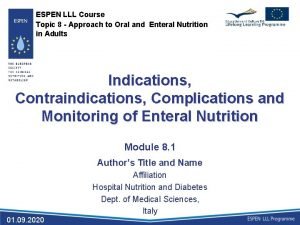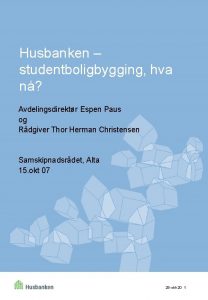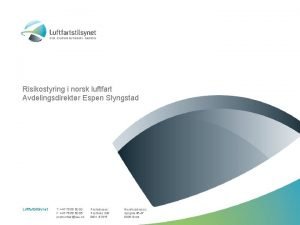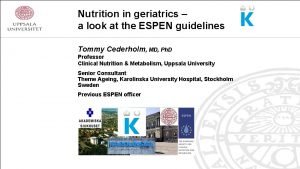ESPEN LLL Course Topic 8 Approach to Oral





- Slides: 5

ESPEN LLL Course Topic 8 - Approach to Oral and Enteral Nutrition in Adults Indications, Contraindications, Complications and Monitoring of Enteral Nutrition Module 8. 1 Author’s Title and Name Affiliation Hospital Nutrition and Diabetes Dept. of Medical Sciences, Italy 01. 09. 2020

Reasons for diarrhoea during EN § Mode of delivery § Characteristics of administered feed (composition, osmolarity, temperature) § Medications (antibiotics and laxatives) § Contaminated feeds § Gastrointestinal infections § Malabsorption

Complications of EN: frequency Problem Frequency Compliance 10 -40 % Tube misplacement / occlusion up to 50 % Diarrhoea 25 -50 % Nausea / Vomiting 10 -15 % Aspiration ? Infections rare Metabolic complications ?

The refeeding syndrome First described in Far East prisoners of war after the second world war. Starting to eat again after a period of prolonged starvation seemed to precipitate heart failure Schnitker Ma, Mattman PF, Bliss TL. A clinical study of malnutrition in Japanese prisoners of war. Ann Intern Med 1951; 35: 69 -96.

Conclusion § EN is a safe procedure and most of its complications are the results of application errors § Certain diseases are associated with specific complications (e. g. aspiration in neurological impairment) § Acceptance and compliance with EN can be enhanced by adequate monitoring and adjustment § In severely malnourished patients excessive food intake must be avoided and careful monitoring is mandatory to avoid the life-threatening refeeding syndrome § Careful monitoring is especially important in intensive care, in elderly patients and neurological disorders









